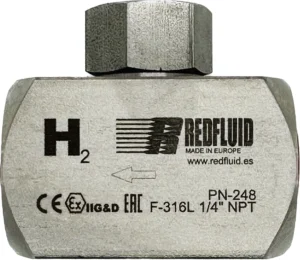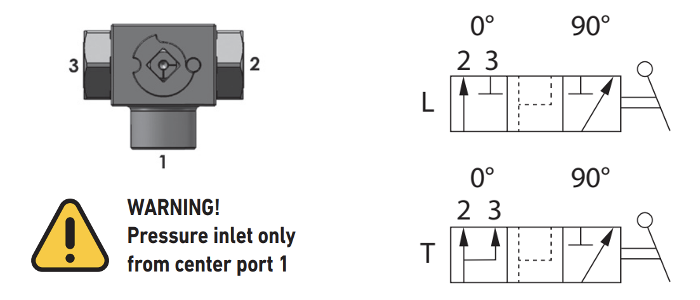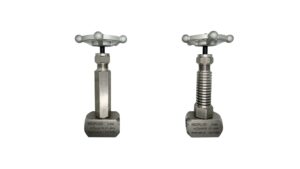
Hydrogen Check Valves
Imagine installing just any check valve in a hydrogen circuit. At first, everything seems to work fine — but over time, internal materials begin to
First premise: A 3-way ball valve can come in two different configurations: L or T.
In any case, they look very similar.
So… keep reading, and I’ll tell you a little about the difference because more than one has been wrong.
That is why differentiating one from the other and understanding its operation is vital to avoid problems in the application where it will be installed.
A 3-way ball valve is a type of floating ball valve. It is the most common type of valve for shutting off flow in a pipeline. It uses a perforated ball as the element to shut off the flow.
The main characteristic of a 3-way ball valve is that it has three ports instead of two. “Makes sense,” you’ll say, but it had to be said.
These ports are usually described as one inlet and two outlet ports, although in exceptional cases, it can be one outlet and two inlet ports depending on the configuration.
It has 3 ways it can control the flow passage in both configurations. In L-passage or T-passage.

The L-passage of a 3-way valve refers to the configuration with one inlet port and two outlet ports. The valve diverts the fluid to one side or the other by entering the fluid through the center. The flow flows from the center connection port to one of the side ports, and when the 3-way ball valve is repositioned, the flow changes direction to the second side port.

The T-passage of a 3-way ball valve refers to the configuration having one inlet port and two outlet ports. The flow flows from the center connection port and splits to the side ports. When the 3-way ball valve is changed position, the flow flows to only one side port. This is due to the closure of the other side port.
The T type thus works in 3 positions, but none of them allows the flow to be completely cut off, as all positions allow the flow to pass either to both outlets, to one or the other.

As mentioned above, there are exceptional cases where you can have one outlet and two inlet ports. In this case, it allows pressure through the side ports. This is the so-called Redfluid K series.
In the case of L-flow, the inlet pressure pushes the floating ball into the seat on the other side port. This creates a perfect leak-proof seal. The seat material must be suitable for the type of fluid and pressure of the application.
When T-flow is allowed, these valves are known as mixing valves.

At RedFluid, we have two series of 3-way ball valves. The 10 series for low pressures up to 64 bar and the 20 series for higher pressures up to 2500 bar. If you have any questions, please get in touch with our experts.
Share this post

Imagine installing just any check valve in a hydrogen circuit. At first, everything seems to work fine — but over time, internal materials begin to

You’ve probably heard about high-temperature or cryogenic valves, the ones that are incredibly resistant because they operate under extreme conditions. But what makes them so
This website uses cookies so that we can provide you with the best user experience possible. Cookie information is stored in your browser and performs functions such as recognising you when you return to our website and helping our team to understand which sections of the website you find most interesting and useful.
Strictly Necessary Cookie should be enabled at all times so that we can save your preferences for cookie settings.
If you disable this cookie, we will not be able to save your preferences. This means that every time you visit this website you will need to enable or disable cookies again.
Esta web utiliza Google Analytics para recopilar información anónima tal como el número de visitantes del sitio, o las páginas más populares.
Dejar esta cookie activa nos permite mejorar nuestra web.
Please enable Strictly Necessary Cookies first so that we can save your preferences!